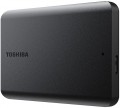Rated capacity is one of the key parameters of a hard drive, which determines how much information can fit on it. For SSHD, this item indicates the capacity of only the hard drive, for RAID arrays, the total capacity of the array.
The volume of information in the modern world is constantly growing and require more and more capacious drives. So in most cases it makes sense to choose a larger disk. In fact, the question of choosing this parameter often rests only on the price: the cost of the drive directly depends on the volume.
If the question is in such a way that you need to choose a disk "smaller and cheaper, but that's enough" — it's worth evaluating the amount of information that you have to deal with and the specifics of use. For example, for an ordinary office PC, designed mainly for working with documents, an internal drive of
2 TB and even
1 TB will be more than enough, and an enthusiastic gamer will need
4 TB,
6 TB and even
8 TB will not be superfluous. If you use a disc for recording from camcorders, then you can get
a 10 TB,
12 TB,
14 TB,
16 TB,
18 TB or more HDD.
For drives used in a PC (see "Intended use"),
5400 rpm(normal) and
7200 rpm(high) are considered standard speeds. There are also
more specific options, including models with the ability to adjust the speed depending on the load. In server HDDs, in turn, higher speeds can be used —
10,000 rpm and even
15,000 rpm.

